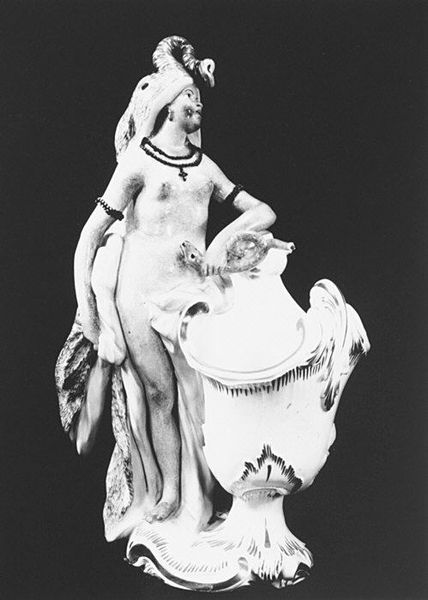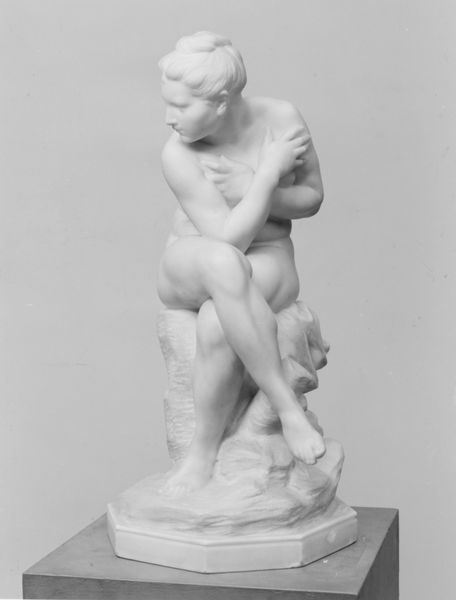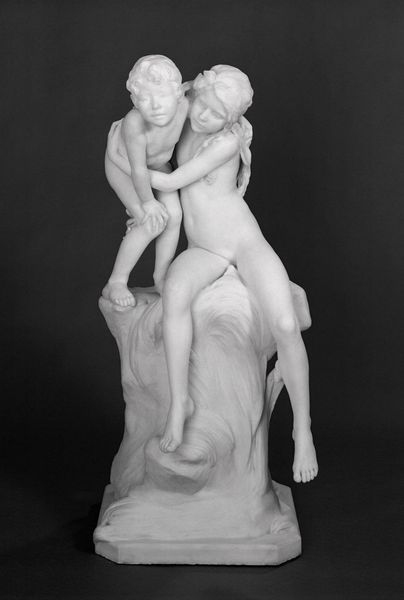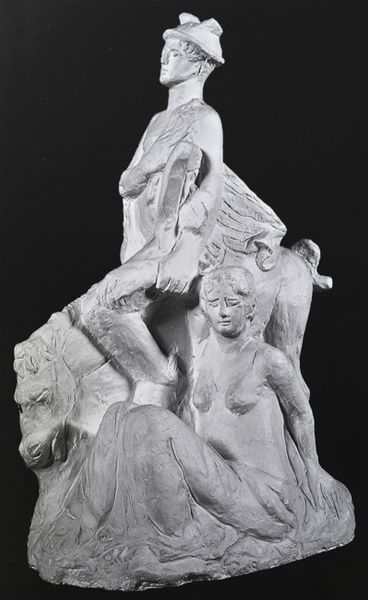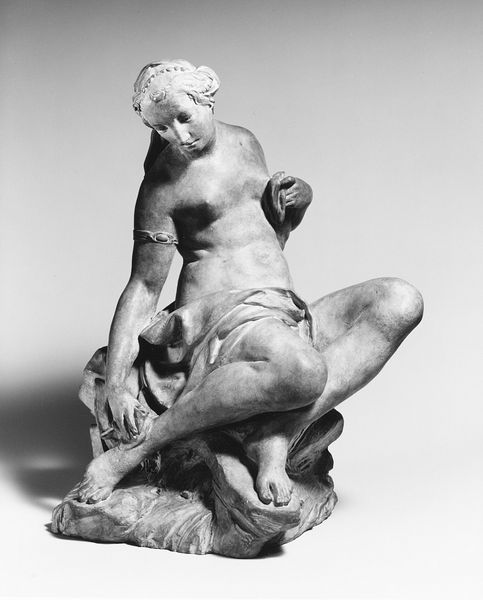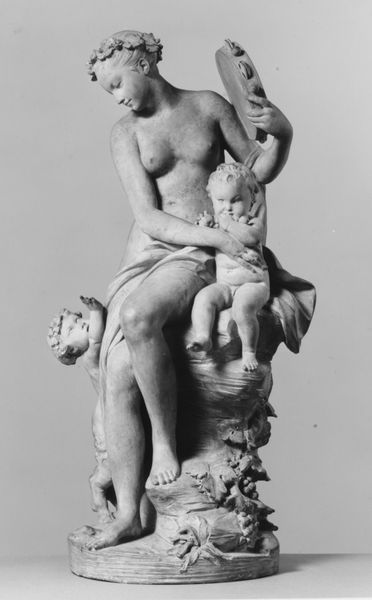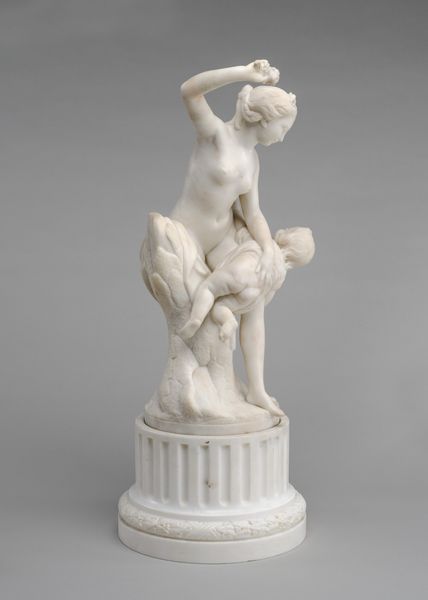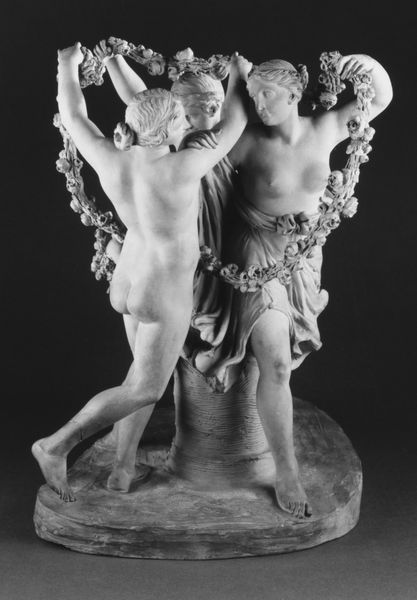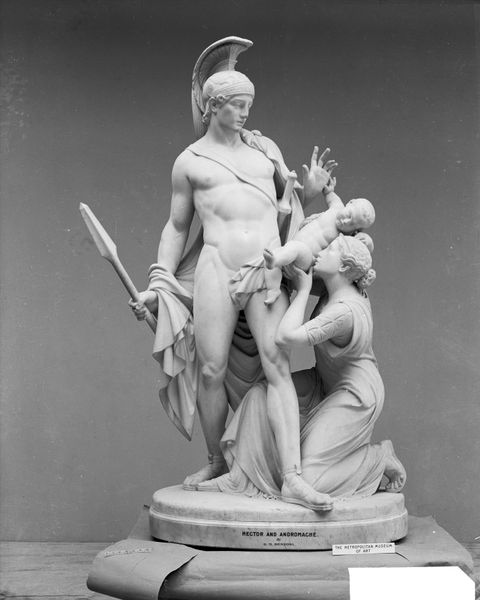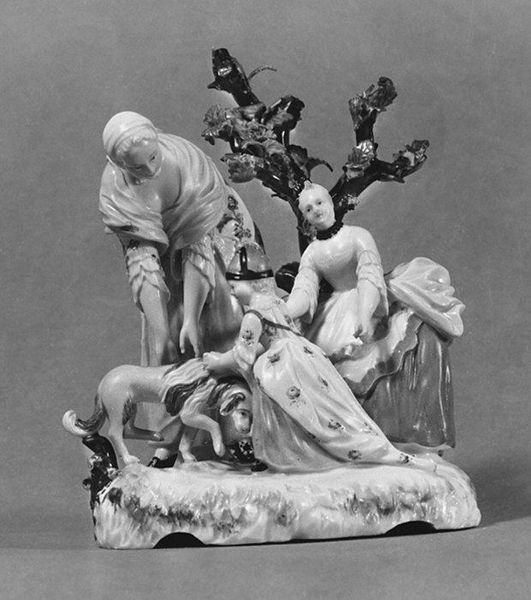
ceramic, sculpture
#
sculpture
#
ceramic
#
figuration
#
sculpture
#
decorative-art
#
rococo
Dimensions: Overall: 7 7/8 × 9 1/2 in. (20 × 24.1 cm)
Copyright: Public Domain
Editor: This porcelain sculpture, “Pyramus and Thisbe,” was crafted sometime between 1750 and 1770 by the Pont-aux-Choux manufactory. The figures are so dynamic, frozen in this melodramatic tableau, all in creamy white ceramic. It’s intense. What sort of reading do you come away with here? Curator: The figures tell a powerful story beyond their immediate forms. We have Thisbe discovering Pyramus, right? Notice how her pose mirrors ancient images of mourning figures. That echo tells us that grief, and the specific ways it's expressed, are culturally inherited and repeated. Editor: So, it’s a repetition of imagery that solidifies its impact? Curator: Precisely. Then consider the putto figure included in the group. He introduces an element of commentary through familiar imagery. Traditionally, putti accompany Venus and love. His presence near the dying lovers, could this suggest that even Love despairs in such tragic scenarios? Editor: That is an interesting idea, that he almost serves as the demise of the idea of Love instead of celebrating it. Curator: See how the maker utilizes that history of symbols and familiar motifs to weave layers of meaning into a single dramatic moment? Rococo sculpture is never *just* decoration; it actively engages in visual dialogues. Editor: I always thought the Rococo was only ornament. This opens up my understanding. I will consider how the iconography and style communicate deeper meanings.
Comments
No comments
Be the first to comment and join the conversation on the ultimate creative platform.
